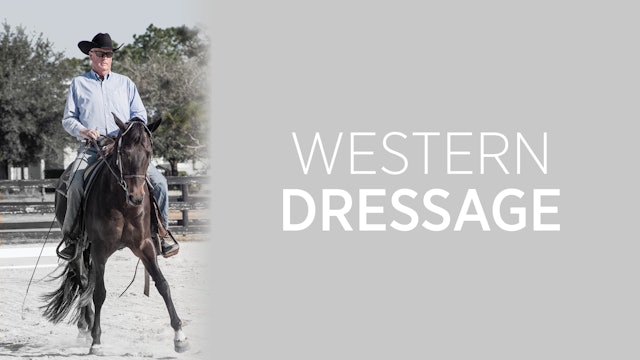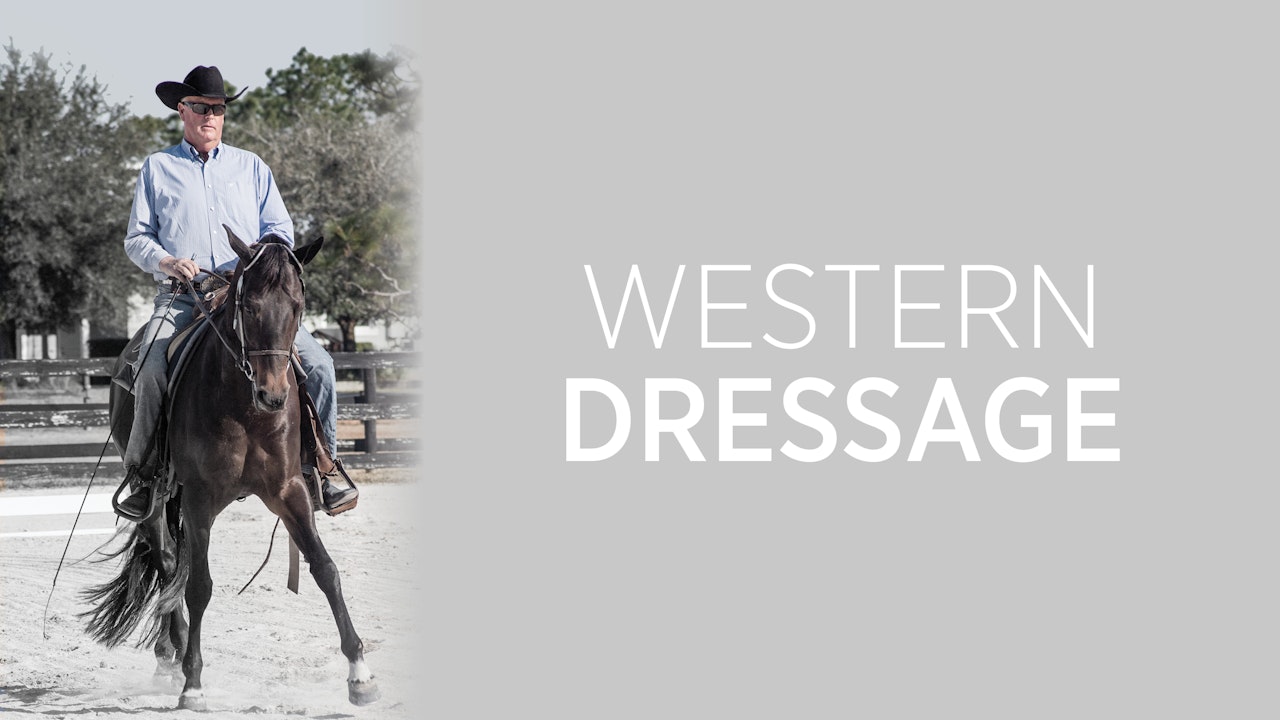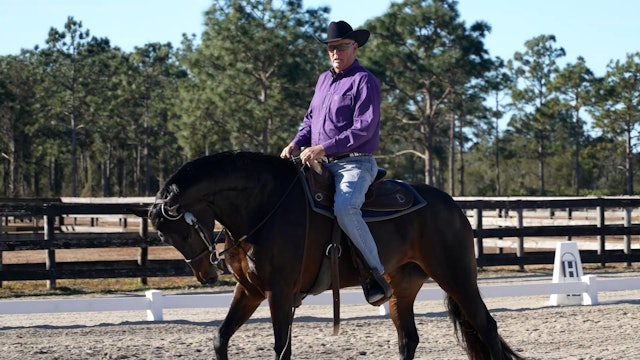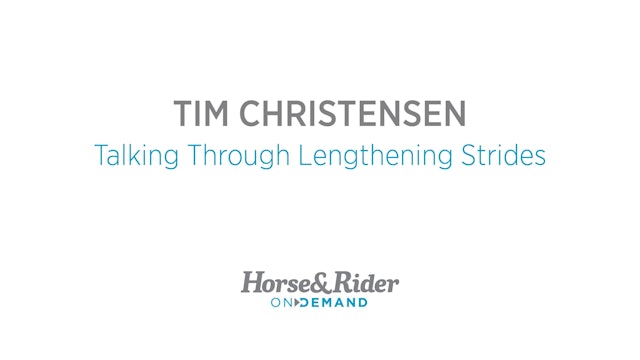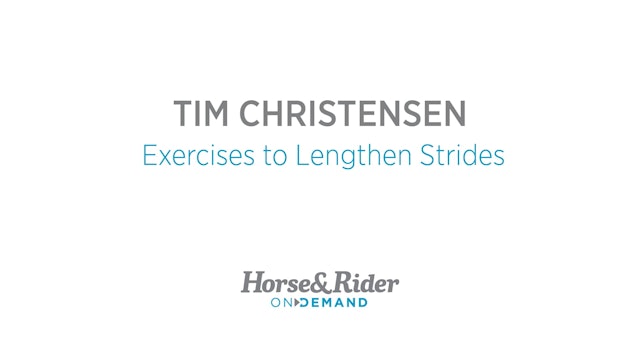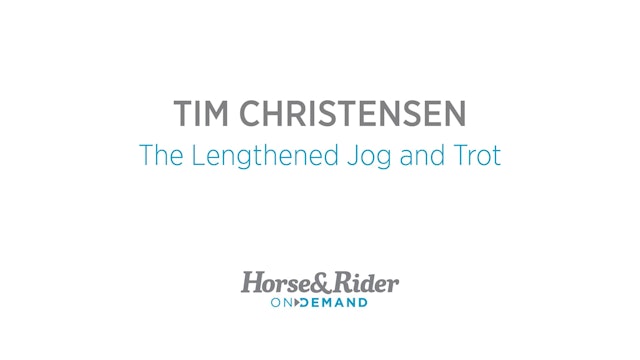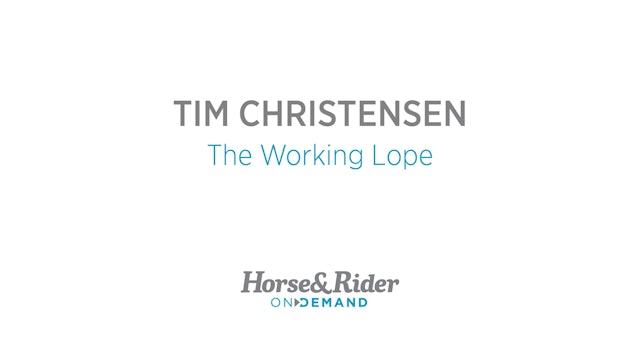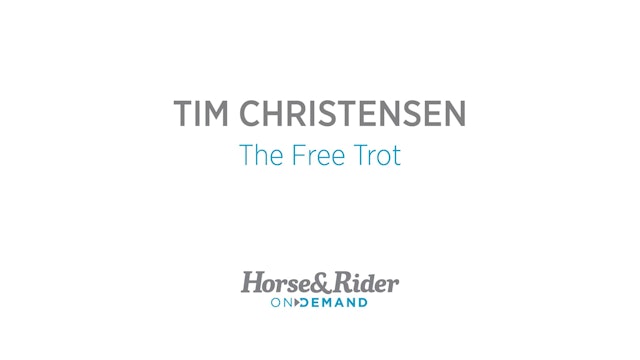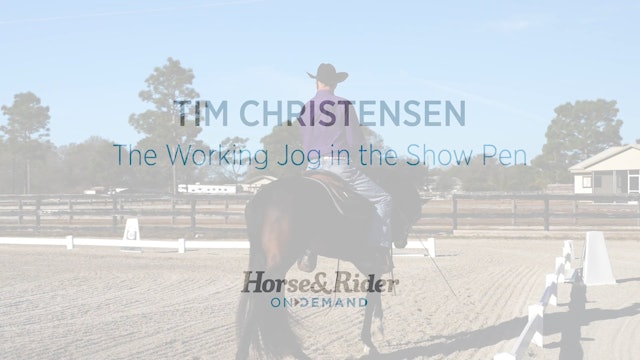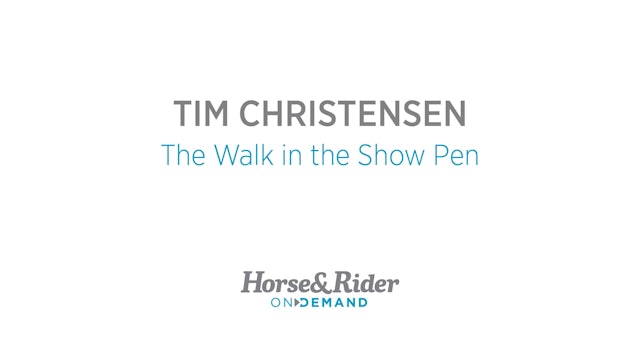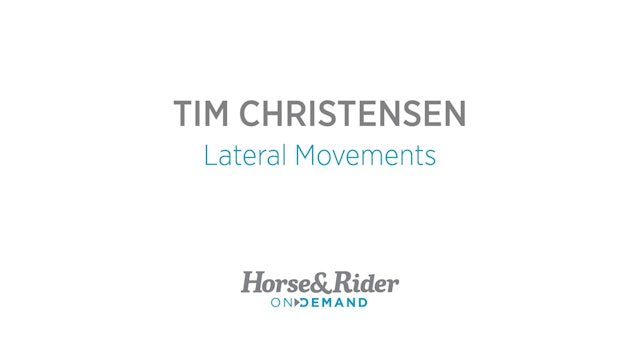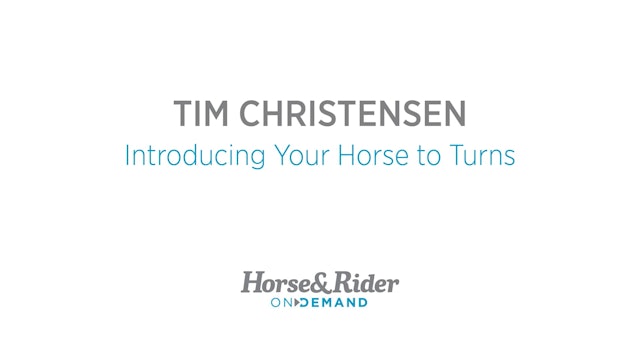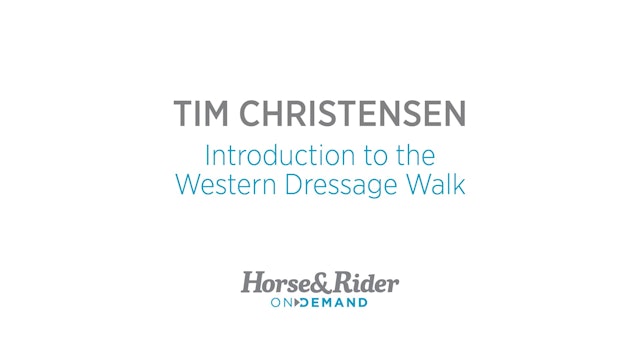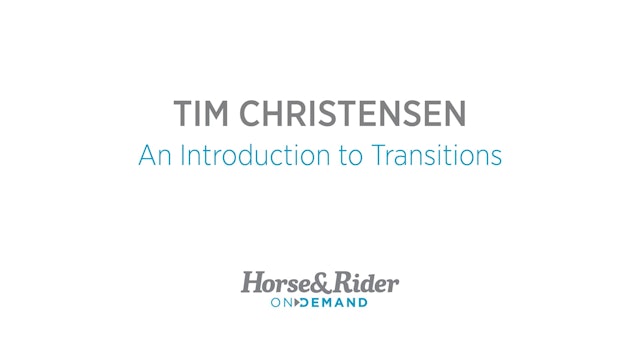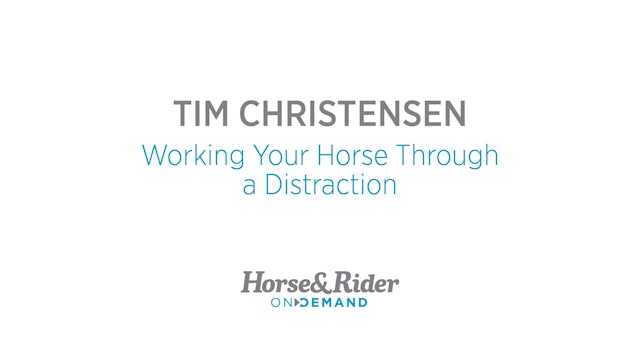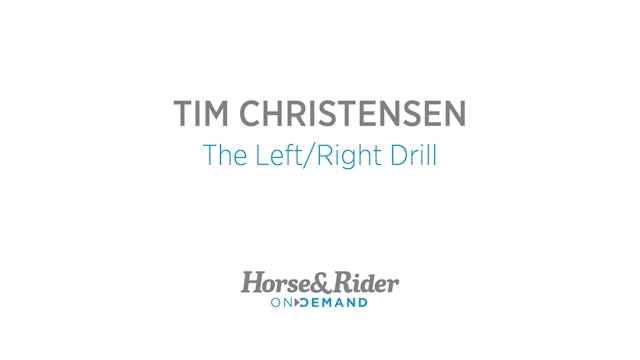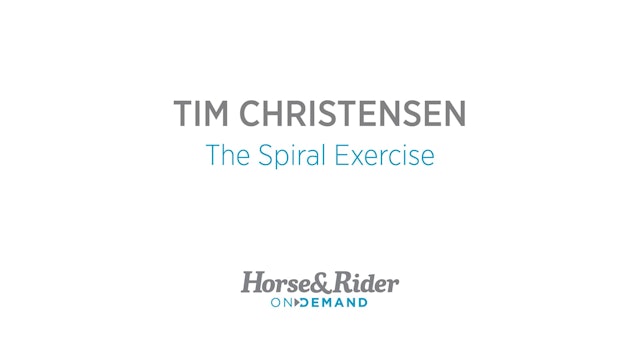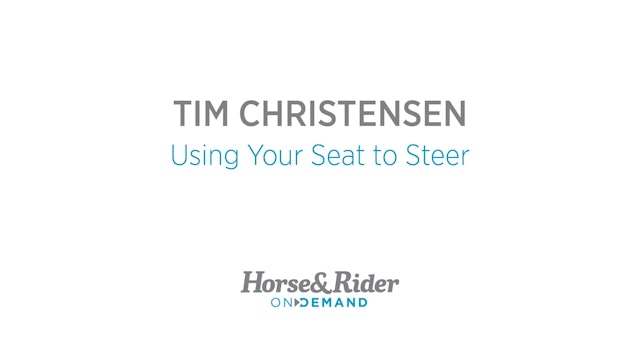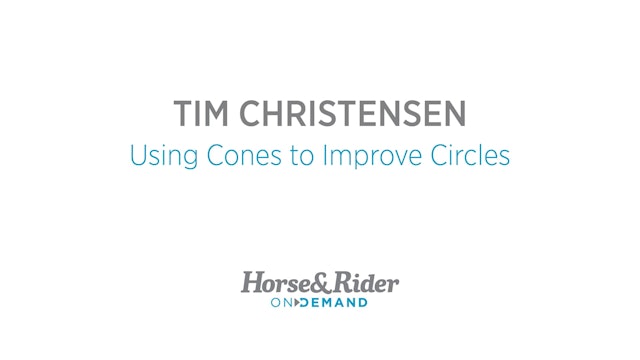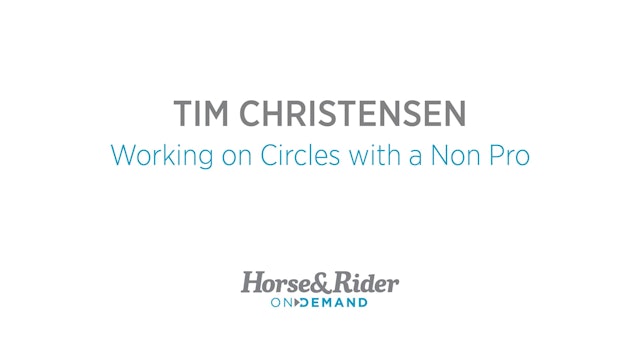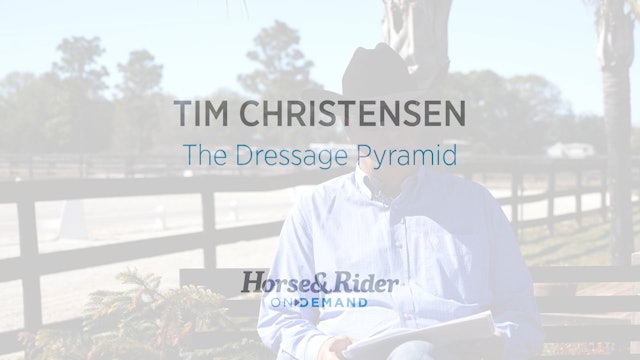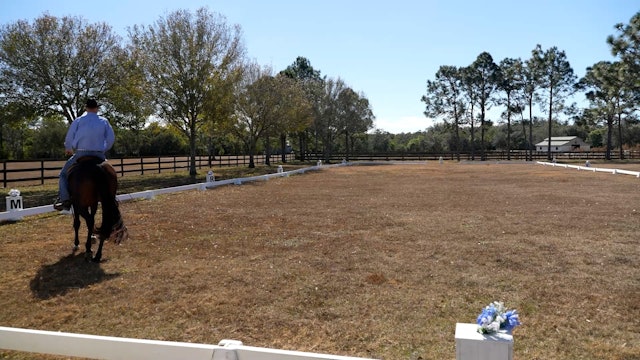Western Dressage
Western dressage gives Western riders who've been interested in the traditional sport of dressage--where horse and rider are judged individually and work their way gradually through well-defined levels--a way to try it out without changing gear. Learn what maneuvers are important, what the tests entail, what kind of horse can flourish in Western dressage, and more!
-
Using Half Halts for Connection
Tim talks us through his every move when asking for a lengthened stride. He explains what he is asking for, how he is asking, and why.
-
Talking Through Lengthening Strides
In this video, Tim gives you some exercises that you can do at home to lengthen your horse's stride. Lenghtening of the trot will be in the Level 1 tests and usually take place on the diagnol line. Tim gives you tips to make your transitions as smooth as possible.
-
Exercise to Lengthen Strides
Tim demonstrates going from a regular jog and trot to an extended. In an extended trot or jog, the judge is looking for a clear change in gate with a noticable difference when you come back to the regular trot or jog.
-
The Lengthened Jog and Trot
The working lope is a forward moving lope with nice contact. Next is the lenghtened lope where you want your horse lengthen his stride while keeping the same mouth contact.
-
The Working Lope
The free trot or "stretchy circle" is part of the basic and level 1 Western dressage test. im Christensen demonstrates how to ride the free trot correctly and what to work on while you're practicing.
-
The Free Trot
Mastering a nice forward, working jog is key to a good Western dressage test. Western dressage trainer Tim Christensen demonstrates a correct working jog on his Appendix mare and shares his tips for creating a good jog.
-
The Working Jog in the Show Pen
Mastering a nice forward, four-beat walk is key to a good Western dressage test. Western dressage trainer Tim Christensen demonstrates a correct walk on his Appendix mare and shares his tips for greating a great walk.
-
The Walk in the Show Pen
Western dressage trainer Tim Christensen demonstrates the lateral movement necessary for the level 1 Western dressage test. He explains what to do if your horse looses forward momentum and shows lateral movement off both the right and left sides.
-
Lateral Movements
Watch as Western dressage trainer Tim Christensen demonstrates the turns you'll see in a Western dressage test.
-
Introducing Your Horse to Turns
Western dressage trainer Tim Christensen describes the ideal walk for the Western dressage. He shares what judges are looking for as well as what your horse's movement should look and feel like.
-
Introduction to the Western Dressage Walk
Western dressage trainer Tim Christensen explains the importance of transitions in a dressage test. He walks you through the basics of transitions and demonstrates riding a correct downward transition.
-
An Introduction to Transitions
Watch as Western dressage trainer Tim Christensen demonstrates his technique for working your horse through a distraction.
-
Working Your Horse Through a Distraction
The rhythm and cadence of every footfall is important in dressage. Tim Christensen explains the origin of dressage and why you need to pay attention to your horse's footfall in Western dressage lower-level gaits and maneuvers.
-
Lower-Level Gaits and Maneuvers
In this video, Tim demonstrates the left/right drill that he had his non pro riders do in the last video. He shows you exactly what the circles are supposed to look like, and explains why this is a great drill for warming up your horse.
-
The Left/Right Warm Up
Tim Christensen has his students demonstrate the left/right drill. He helps them work through the exercise, focusing on round circles, switching the bend, and helping the students support their horse's outside shoulder.
-
The Left/Right Drill
Tim Christensen has his students demonstrate the spiral exercise. This exercise helps create rounder circles and while making your horse more flexible.
-
The Spiral Exercise
Tim Christensen has his student demonstrate how you use your seat to steer.
-
Using Your Seat to Steer
You can use cones to improve the roundness of your circles.Tim Christensen explains where to place the cones and how to ride the exercise while his student demonstates.
-
Using Cones to Improve Circles
Tim Christensen discusses some of the problems that can arise when riding circles in the Western dressage. He helps one of his students troubleshoot and offers her advice on how to improve the roundness of her circles.
-
Focusing on Round Circles with a Non Pro
Tim Christensen helps one of his students riding an Arabian/Trakehner cross work on 20 meter circles in to 20x40 arena. He uses the toy train analogy to help explain how to keep roundness in the circles.
-
Working on Circles with a Non Pro
Learn how the dressage pyramid can help you train and get a feel for Western dressage. Tim Christensen explains the blocks of the pyramid—rhythm, relaxation, connection, impulsion, straightness, and collection.
-
The Dressage Pyramid
Tim Christensen demonstrates riding serpentines on the quarter line. He explains where to turn, where to switch the bend, and other points to keep in mind while riding the serpentine.
-
Demonstrating Serpentines on a Quarter Line
Tim Christensen demonstrates riding serpentines on the quarter line. He explains where to turn, where to switch the bend, and other points to keep in mind while riding the serpentine.
-
Demonstrating Serpentines
A serpentine is three equal loops. Tim Christensen demonstrates several correctly ridden serpentines, noting where he turns for each.

